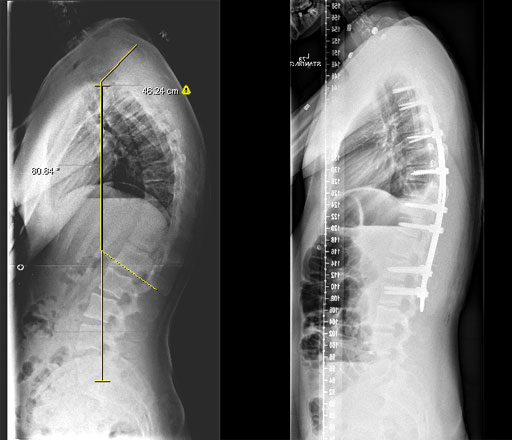Kyphosis is a condition in which the spine, or back, curves abnormally in an outward direction, resulting in an exaggerated rounding of the upper back. When the curvature becomes severe enough to cause pain or interfere with normal functioning, surgery may be recommended. Kyphosis treatment is used to correct the curvature and stabilize the spine, in order to relieve pain, increase mobility, and improve posture.
Image Source : Google
The type of surgery chosen depends on the severity of the kyphosis and the age of the patient. In mild cases, bracing may be recommended as a conservative treatment option. For more severe cases, surgery may be necessary to realign the spine. The most common types of kyphosis surgery include spinal fusion, vertebral column resection, and osteotomy.
Spinal fusion is the most common type of kyphosis surgery. It is used to stabilize the spine by joining, or fusing, two or more vertebrae together. The vertebrae are held in place with rods, screws, and other implants. This procedure prevents further curvature and allows the spine to heal in a corrected position.
Vertebral column resection is usually used for severe cases of kyphosis. This procedure involves removing a portion of one or more vertebrae in order to reduce the curvature. Osteotomy is a less common procedure and is used to correct very severe cases of kyphosis. During this procedure, the vertebrae are cut and then re-positioned to correct the curvature.
In addition to the surgical procedures, physical therapy may be recommended after surgery to help the patient regain strength, flexibility, and balance. The physical therapist will also help the patient learn how to properly use their back muscles to maintain proper posture.

